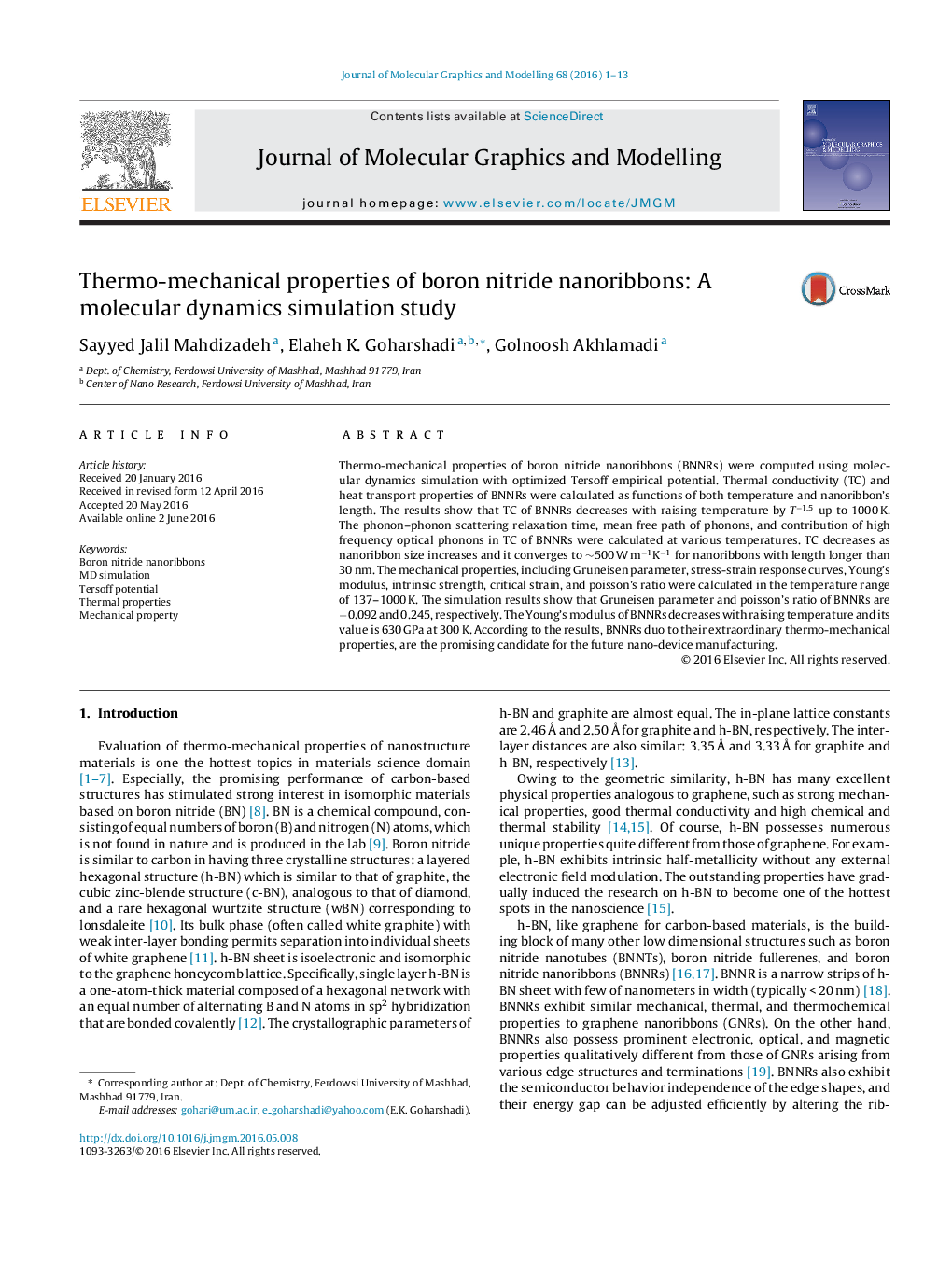| Article ID | Journal | Published Year | Pages | File Type |
|---|---|---|---|---|
| 443213 | Journal of Molecular Graphics and Modelling | 2016 | 13 Pages |
•TC of BNNRs decreases with temperature by T−1.5 for temperatures up to 1000 K.•TC of BNNRs decreases with size and converges to ∼500 W m−1 K−1 for L > 30 nm.•The Young’s modulus of BNNRs decreases with temperature and it is 630 GPa at 300 K.•Gruneisen parameter and poisson’s ratio of BNNRs is −0.092 and 0.245, respectively.
Thermo-mechanical properties of boron nitride nanoribbons (BNNRs) were computed using molecular dynamics simulation with optimized Tersoff empirical potential. Thermal conductivity (TC) and heat transport properties of BNNRs were calculated as functions of both temperature and nanoribbon’s length. The results show that TC of BNNRs decreases with raising temperature by T−1.5 up to 1000 K. The phonon–phonon scattering relaxation time, mean free path of phonons, and contribution of high frequency optical phonons in TC of BNNRs were calculated at various temperatures. TC decreases as nanoribbon size increases and it converges to ∼500 W m−1K−1 for nanoribbons with length longer than 30 nm. The mechanical properties, including Gruneisen parameter, stress-strain response curves, Young’s modulus, intrinsic strength, critical strain, and poisson’s ratio were calculated in the temperature range of 137–1000 K. The simulation results show that Gruneisen parameter and poisson’s ratio of BNNRs are −0.092 and 0.245, respectively. The Young’s modulus of BNNRs decreases with raising temperature and its value is 630 GPa at 300 K. According to the results, BNNRs duo to their extraordinary thermo-mechanical properties, are the promising candidate for the future nano-device manufacturing.
Graphical abstractFigure optionsDownload full-size imageDownload high-quality image (158 K)Download as PowerPoint slide
